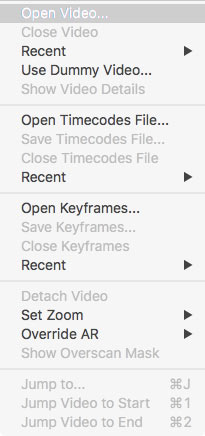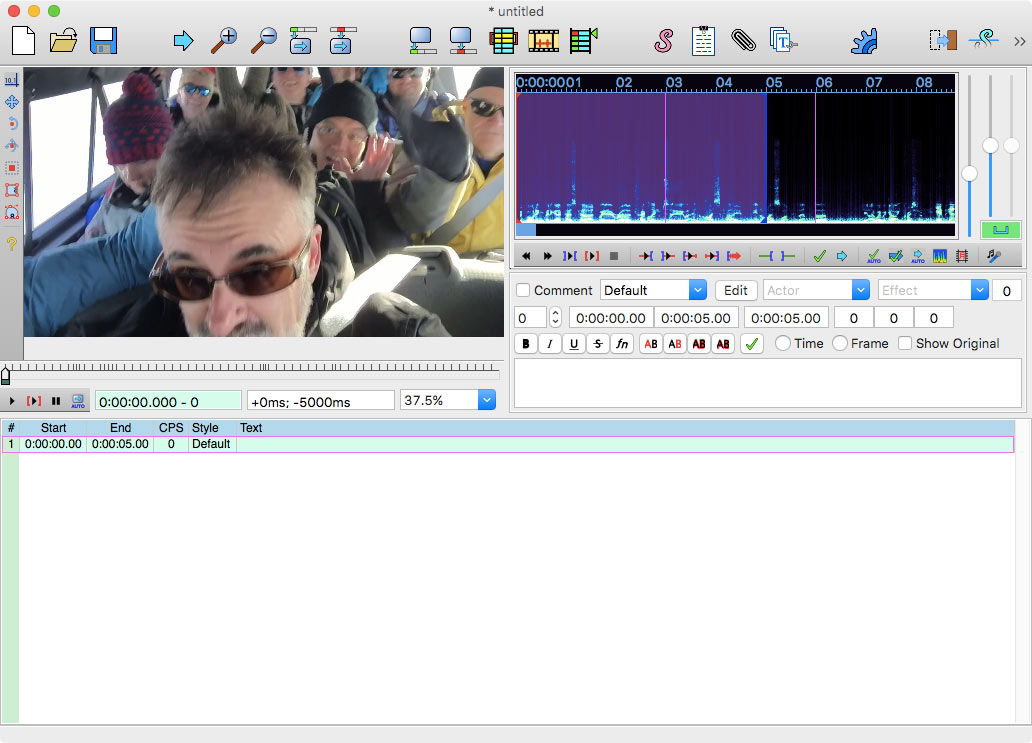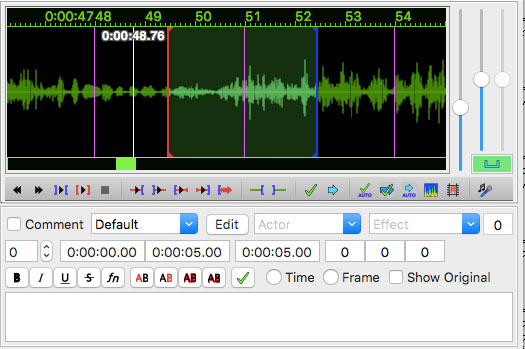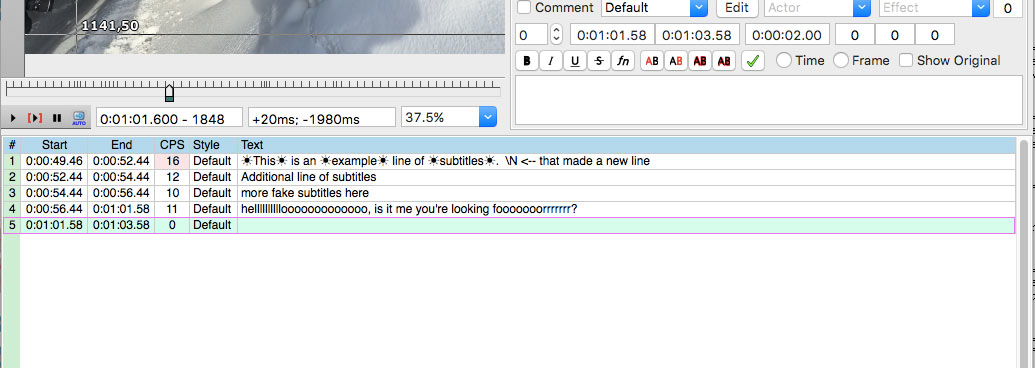- To begin creating subtitles in Aegisub first open the program.
Watch a video on Creating Closed Captions with Aegisub or follow the instructions below.
If you don't already have a .SRT or .VTT closed caption file, you can create captions yourself. Aegisub is a free, open-source program for creating subtitles. It's available for both Mac and Windows. Aegisub allows you to load a video and caption it line by line. The process is simple and easy to learn. With a bit of time and effort, you can create an accurate, high quality caption file for your video. Once created, the caption file can be easily attached to any of your videos in Warpwire.

- Then, open the video you'd like to subtitle by clicking the Video menu and then "Open Video."

- Navigate to your video, and open it!

- You'll now see the video in the upper-left corner of the screen, and in the upper-right, you'll see the audio for that video

- it'll be displayed as either a waveform or as a spectrum. You can toggle this to your visual preference using the spectrum/waveform button on the audio editing toolbar.

- You'll notice various vertical lines in the audio display. The pink one indicates key frames in the video, if you have key frames loaded. The white line indicates the currently visible video frame and the thick red and blue lines indicate the start and end markers for the current line of subtitles.
To redefine the start and end times of the line you can either left-click to set the start time and right-click to set the end time, or just drag and drop the line boundaries.

- You can also manually input the start and end time for your line.

- Below the audio is the area where you type your subtitles. You can use bold, italic, underline, and strikethrough and you can specify line breaks if it's a particularly long subtitle.
When you're satisfied with the timing of your subtitle click commit (the green checkmark) and it will create the next line and move forward in the audio and video.

- Underneath the video and audio, you'll see the subtitles grid. Here, you'll see all of the subtitle lines you've created, along with the start and end times.

- You can edit these times, merge lines, or split lines, to create the perfect subtitles for your file. Just right click on a line a of subtiles and explore the context menu.

- Once you've got your subtitle lines written, you can hit play on the videos to verify the timing and location of your subtitles.

- Once you're done you can export your subtitles in a variety of formats. Click "Export as..." from the "File" menu.

- Finally, select your preferred format (.SRT or .VTT for Warpwire) and then click save.

See also: Attach Closed Captions.
Was this article helpful?
That’s Great!
Thank you for your feedback
Sorry! We couldn't be helpful
Thank you for your feedback
Feedback sent
We appreciate your effort and will try to fix the article